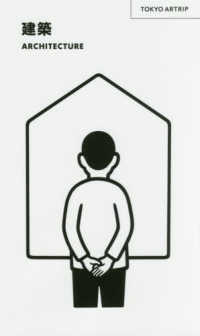- ホーム
- > 洋書
- > ドイツ書
- > Humanities, Arts & Music
- > Music
- > musical equipment
Description
(Short description)
This piece exemplifies contemporary Cuban chamber music, offering a variety of technical and interpretative possibilities for both instrumentalists. The work features the use of polytonality, yet it also includes huge intervallic leaps and improvisational fragments. A rewarding recital selection for proficient players!Besetzung:Klarinette und Klavier
(Text)
Dieses Stück ist ein Beispiel für zeitgenössische kubanische Kammermusik und bietet eine Vielfalt von technischen und interpretatorischen Möglichkeiten für beide Spieler. Das Werk zeichnet sich durch Polytonalität aus, aber enthält auch große Intervallsprünge und improvisierte Fragmente. Ein dankbares Konzertstück für erfahrene Spieler!Schwierigkeitsgrad: 5
(Short description)
This piece exemplifies contemporary Cuban chamber music, offering a variety of technical and interpretative possibilities for both instrumentalists. The work features the use of polytonality, yet it also includes huge intervallic leaps and improvisational fragments. A rewarding recital selection for proficient players!Besetzung:clarinet and piano
(Text)
The dedications accompanying Preludio No. 1 and No. 2 show the author's admiration and respect towards his former teachers and masters, the eminent Cuban clarinetists Roberto Sánchez López (1914 - 1987), Enrique Pardo Fuentes (1905 - 1996) and Juan J. Junco (1913 - 2001), who also stand out as composers and, especially, as notable pedagogues teaching this instrument to several generations of Cuban musicians. Contrived as duos for Bb clarinet and piano, these pieces are exemplary of one of the diversified creative tendencies within contemporary Cuban chamber music, demanding the revelation of the varied spectrum of technical and interpretative possibilities of both instrumentalists.These compositions feature the use of polytonality, the simultaneous application of various modes and complex polyrhythmic passages established between the clarinet and the piano; yet, they also show those huge intervallic leaps and the existence of fragments of improvisational or cadence-like characterdetermining the clarinet's melodic discourse.Their style is not only sustained by the specific characteristics and complex traits peculiar to contemporary concert music, but also by latin jazz and the distinct manifestations of Cuban popular and folkloristic music. Among the latter, the canción afro and the son stand out by their singular ways of melodic intonation and their typical concatenations and superpositions of sincopes. Achieving an appropriate and pleasing execution and interpretation of these preludes will therefore represent an attractive and tempting challenge to the musicians. Ana V. Casanova (Musicologist)Instrumentation:clarinet and piano







